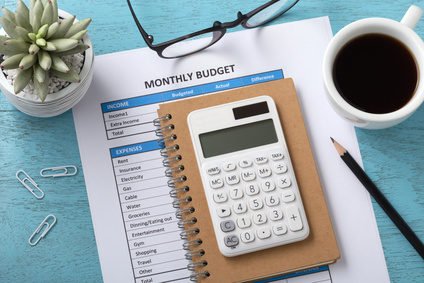People understand income. It’s simply money coming in. Wages, salary, pension, child benefit, tax credits, dividends, interest on deposit accounts are all forms of income.
People also understand expenditure. It’s simply money going out or what you spend. Some spending is done by cash, some by credit or debit card, some by cheque, some by standing order mandate, some by direct debit mandate and so on.

Put the two words ‘Income’ and ‘Expenditure’ together however and many people will scratch their heads, even in this day when education is – supposedly – available to all. An Income & Expenditure Statement (I&E Statement) can be a scary concept for some but if you boil it down to its simplest form, it is just a summary of your income in a given period (usually a month) and what you spend in the same period.
All you have to do is list your income items for one month and the amount of each and tot them up and then list your expense items for the same month and the amount of each and tot them up. Now you have two monetary amounts. Subtract one total from the other and, assuming your total income exceeds your total expenditure, the difference is your Disposable Income (DI). This DI is the amount of money available to you to do as you please with. You can save it, do some additional spending, give it away as a gift or whatever you please.
Some obvious problems arise. For many people, it’s not as simple as that to compile an I&E Statement. For a start, you may be part of a couple with or without children and not a single individual. The answer is that you include all sources of income and all items of expenditure for yourself, your partner and any dependent children residing with you. Call this a family I&E Statement if you like. Secondly, items of expenditure may vary from month to month. You may pay certain items such as car insurance once a year. The answer is to calculate the average monthly amount you need to put aside so that you can pay the annual amount when it falls due.
The most serious problem however is when your expenditure exceeds your income and you have negative DI. Now you are living beyond your means. You are spending more than your income. If the month for which you compiled your I&E Statement is typical of the year as a whole, then you must take steps to address the overspend. Otherwise you get into debt which will grow in size as each month passes. If this has been going on for a while you may already be seriously in debt. What can you do?
A good start is look at ways of cutting back on your spending and then following through with actual cutbacks. This is often easier said than done. You could look at smoking, drinking, socializing and holiday expenditure. You could look at the cost of utilities and switch to cheaper providers of electricity, gas, telephone and mobile phones.
You could look at ways to increase income. Could you take in a paying lodger? Can you or your spouse take on a second or part-time job? Do adult children residing with you contribute their fair share to the family budget? Do you get all the benefits you are entitled to such as tax credits and housing benefit? Could you downsize to a cheaper more economical car? Again, you need to follow through with actions – it’s not enough to decide what you need to do.
We call all these considerations and the follow-up actions
‘budgeting’. If you find this process is too difficult or demanding for
you or your family, do take advice. If you are already encountering
difficulties re-paying your debts you may be insolvent. If you want to
determine this one way or the other, do consider going to CCCS, CAB or
to any reputable commercial provider of insolvency services and
obtaining professional advice. There you will get free advice and
assistance in compiling your I&E Statement and you will learn for
sure if you are insolvent or not.
Any reputable Insolvency Practitioner (IP) will determine if you are
insolvent. If you are, you can explore and have explained to you the
possible solutions to your predicament. All available options will be
explained. Such options could include Bankruptcy, an Individual
Voluntary Arrangement, a Debt Management Plan, a Debt Relief Order, an
Administration Order, Debt Consolidation or some other financial
solution. You can make up mind if you want to proceed further. You
commit to nothing at this point and can walk away and ‘sort out’ your
own finances.